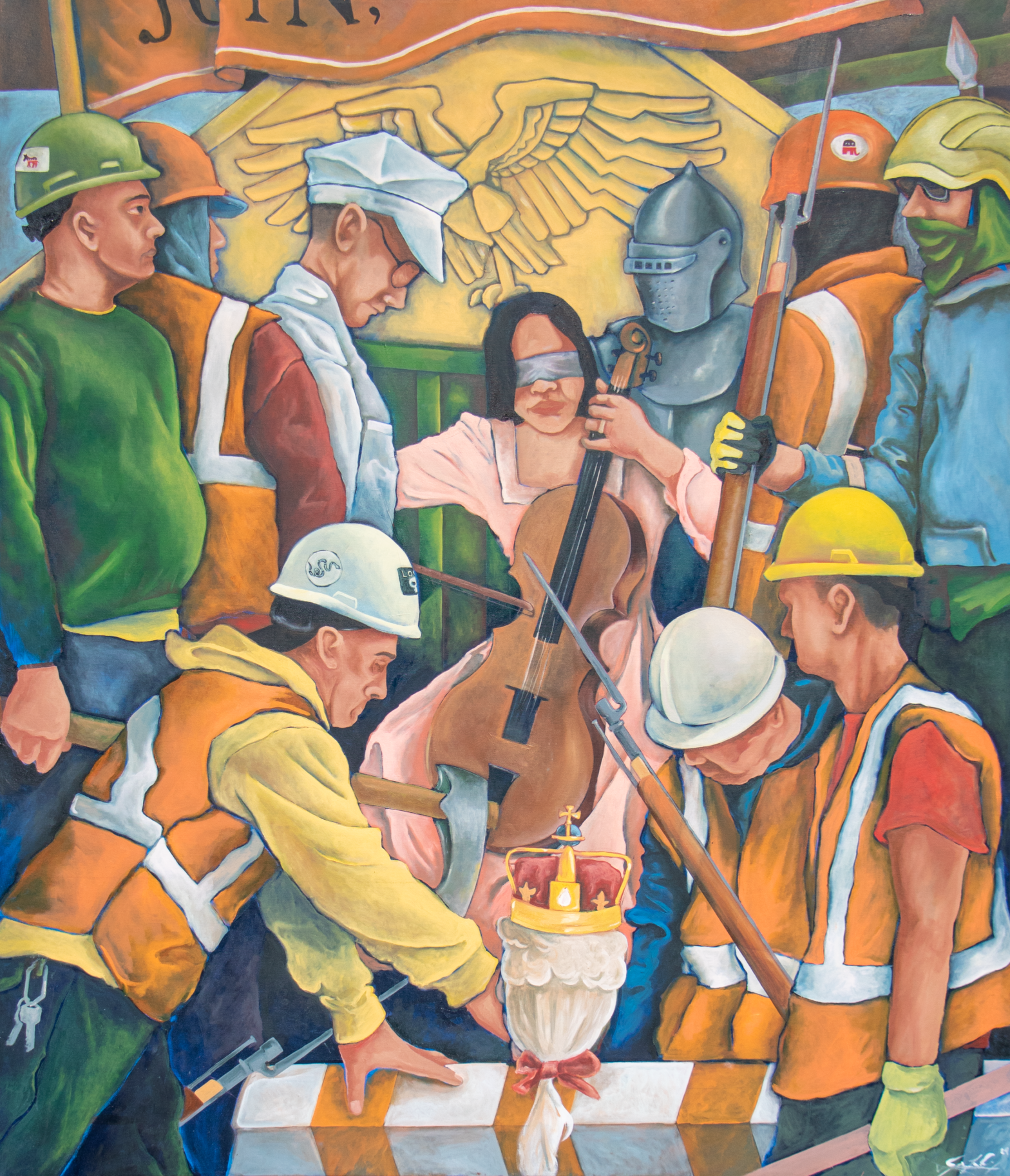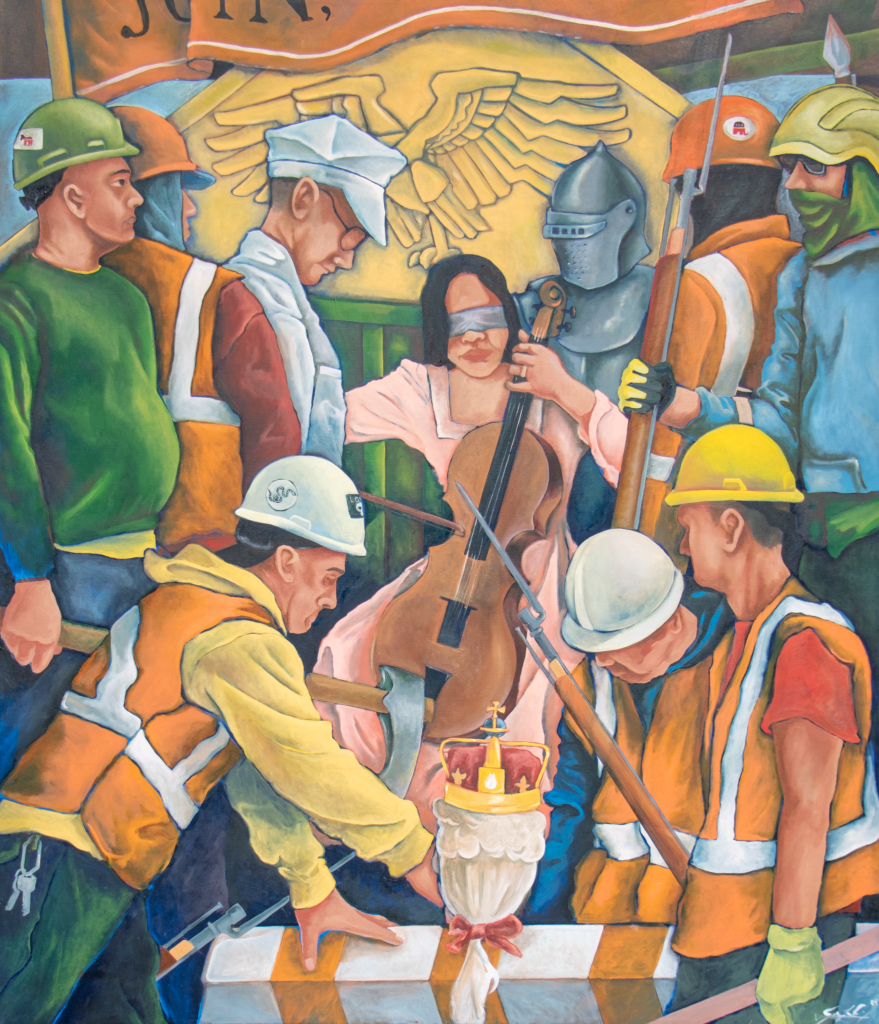
Most of my work begins with a central figure—one or two people on the street or in my imagination—and I build a story around them. For Self Evident Crowning Achievement, my “protagonist” was a woman I saw dressed in classical period costume playing the cello on the 155th Street D station.
The title Self Evident Crowning Achievement is based on the second paragraph of the Constitution, “We hold these truths to be self-evident, that all men are created equal, that they are endowed by their Creator with certain unalienable Rights…” The crowning achievement pictured here is the symbolic dismemberment of monarchical rule over colonial-era America- and all born of that act.
There are few true villains in life – almost everyone is good for someone. In this work, and others in this series, I try not to cast aspersions or judgment into the work. I present moments in history through the filter of laborers. Each as an interpretation of a person, a theme, or an idea.
A Visual Guide
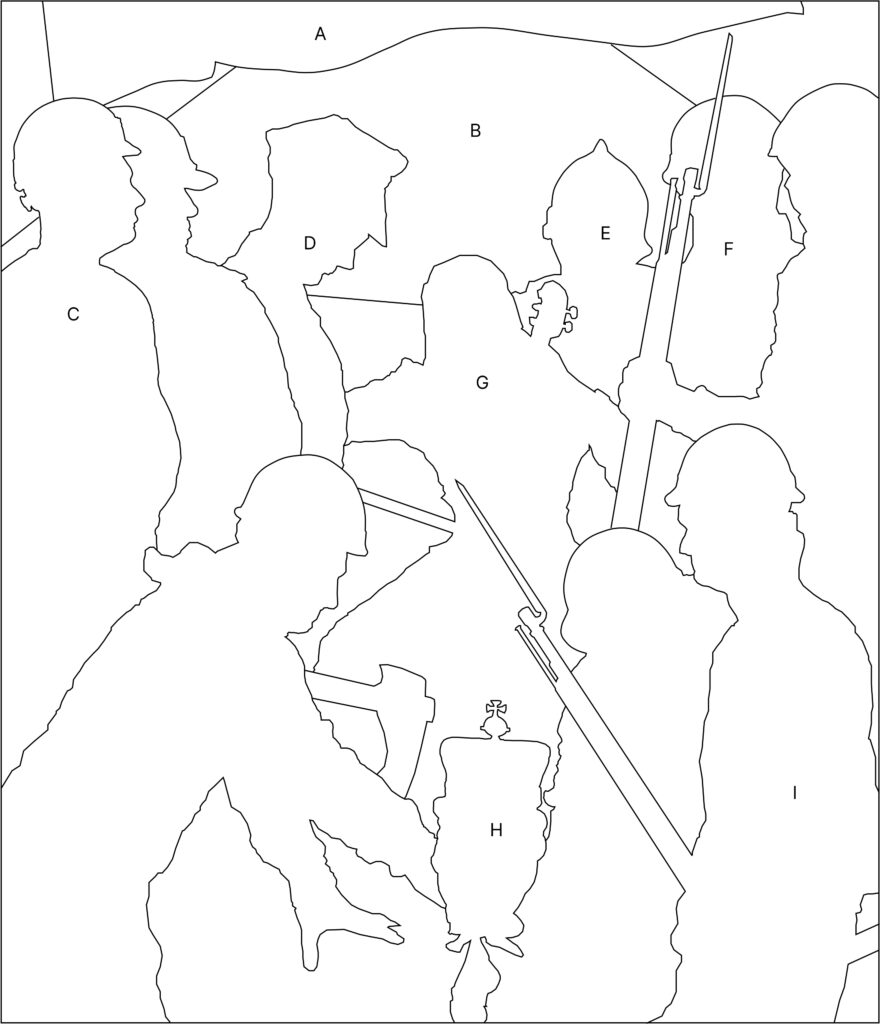
A. In 1754, Benjamin Franklin published the “Join or Die” political cartoon in response to the French and Indian War (Seven Years War). It was later repurposed during the Revolution to represent American colonies joining together or risking defeat.
This canvas was painted before it was wrapped around stretcher bars. The majority of the text “Join or Die” is lost.
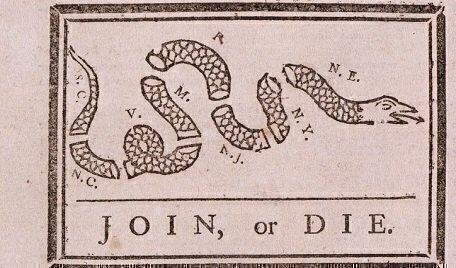
B. My once-a-week commute to the city ends with a brisk walk from the A Train on 14th St to 13th and 5th Ave. The majority of the reference images I use are snapped along this walk. What always grabs my attention is the Salvation Army building facade. It features an Eagle surrounded by their slogan; “Blood and Fire.” That slogan is a Christian reference. However, I can’t help but think of the quote “The tree of liberty must be refreshed from time to time with the blood of patriots and tyrants.” (Thomas Jefferson)
C. A construction worker with a Democratic Donkey sticker on his helmet. Though the modern-day political parties didn’t exist in the 1700s, there were political ideologies. Loyalists notwithstanding, Colonists had to set aside (for however briefly) many differences to prevail against the British might. Indeed, unity of purpose in pursuit of greatness.
D. Milkman. Think 1960’s black-and-white television. A newspaper delivery boy with white knee-length socks. This man represents rosy retrospection. The dangers of embellishing the past with fondness. He stands as the antithesis to characters C & F.

E. Medieval Justice personified. When I started this body of work I was mildly obsessed with orienting all the figures into medieval battle gear. I’ve since moved into a more nuanced approach to depicting the period. This medieval soldier embodies medieval justice – and all the associated baggage before establishing “modern” law codes.
*For “modern law codes” see Dobbs v. Jackson Women’s Health Organization. What is modern?
F. A construction worker with a Republican Elephant sticker on his helmet. See C & D.
G. Personification of Justice playing the cello. Lady Justice is often depicted wearing a blindfold. I wish there were a profound meaning to the choice of instrument. There isn’t. Sitting on the platform behind a portable podium sat a young woman playing the cello. However, in choosing to cast her as Justice in a painting about the founding of this nation, I hoped to include a nod to the “original sin” of the United States. A house built on an unsteady foundation.
H. King George III – sans body. The long arm of history has placed monarchy and its like as the principle modus operandi of peoples. The United States of America is not an outlier in the concept of representative government. Yet in throwing off the yoke of the British crown, it placed the setting stone of modern history.
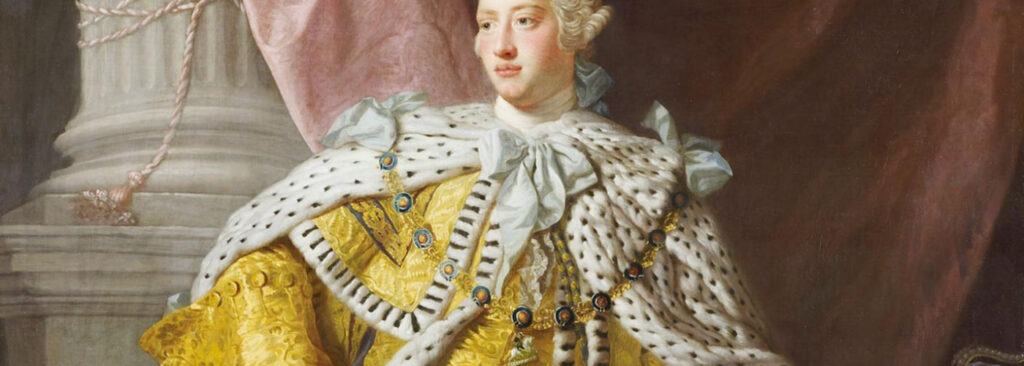
I. Construction worker holding a Brown Bess. The Brown Bess is synonymous with the American Revolution. Firearms have a… interesting relationship with America.
Most of my extended family lives in Ecuador. It’s always interesting to hear the way they discuss the gun culture in this country. I find it necessary to incorporate firearms into stories about America.
